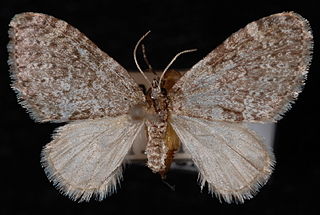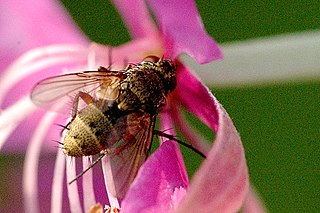
An archipelago, sometimes called an island group or island chain, is a chain, cluster, or collection of islands, or sometimes a sea containing a small number of scattered islands.

A musician is a person who composes, conducts, or performs music. According to the United States Employment Service, "musician" is a general term used to designate one who follows music as a profession. Musicians include songwriters who write both music and lyrics for songs, conductors who direct a musical performance, or performers who perform for an audience. A music performer is generally either a singer who provides vocals or an instrumentalist who plays a musical instrument. Musicians may perform on their own or as part of a group, band or orchestra. Musicians specialize in a musical style, and some musicians play in a variety of different styles depending on cultures and background. A musician who records and releases music can be known as a recording artist.

Telemarketing is a method of direct marketing in which a salesperson solicits prospective customers to buy products or services, either over the phone or through a subsequent face to face or web conferencing appointment scheduled during the call. Telemarketing can also include recorded sales pitches programmed to be played over the phone via automatic dialing.
An online encyclopedia, also called an Internet encyclopedia, or a digital encyclopedia, is an encyclopedia accessible through the internet. Examples include Wikipedia and Encyclopædia Britannica.
An ancestor, also known as a forefather, fore-elder, or a forebear, is a parent or (recursively) the parent of an antecedent. Ancestor is "any person from whom one is descended. In law, the person from whom an estate has been inherited."

Muntjacs, also known as the barking deer or rib-faced deer, are small deer of the genus Muntiacus native to South Asia and Southeast Asia. Muntjacs are thought to have begun appearing 15–35 million years ago, with remains found in Miocene deposits in France, Germany and Poland. Most species are listed as Least Concern or Data Deficient by the IUCN, although others such as the black muntjac, Bornean yellow muntjac, and giant muntjac are Vulnerable, Near Threatened, and Critically Endangered, respectively.

The National Institute on Drug Abuse (NIDA) is a United States federal government research institute whose mission is to "advance science on the causes and consequences of drug use and addiction and to apply that knowledge to improve individual and public health."

Aquarius (♒︎) is the eleventh astrological sign in the zodiac, originating from the constellation Aquarius. Under the tropical zodiac, the Sun is in the Aquarius sign between about January 20 and about February 18.
Agia, ayia, aghia, hagia, haghia or AGIA may refer to:

J, or j, is the tenth letter in the Latin alphabet, used in the modern English alphabet, the alphabets of other western European languages and others worldwide. Its usual name in English is jay, with a now-uncommon variant jy. When used in the International Phonetic Alphabet for the y sound, it may be called yod or jod.

The CAGE questionnaire, the name of which is an acronym of its four questions, is a widely used screening test for problem drinking and potential alcohol problems. The questionnaire takes less than one minute to administer, and is often used in primary care or other general settings as a quick screening tool rather than as an in-depth interview for those who have alcoholism. The CAGE questionnaire does not have a specific intended population, and is meant to find those who drink excessively and need treatment. The CAGE questionnaire is reliable and valid; however, it is not valid for diagnosis of other substance use disorders, although somewhat modified versions of the CAGE questionnaire have been frequently implemented for such a purpose.

A goblin is a grotesque, monstrous creature that appears in the folklore of multiple European cultures. They are ascribed conflicting abilities, temperaments, and appearances depending on the story and country of origin, ranging from mischievous household spirits to malicious, bestial thieves.
Self-report sexual risk behaviors are a cornerstone of reproductive health–related research, particularly when related to assessing risk-related outcomes such as pregnancy or acquisition of sexually transmitted diseases (STDs) such as HIV. Despite their frequency of use, the utility of self-report measures to provide an accurate account of actual behavior are questioned, and methods of enhancing their accuracy should be a critical focus when administering such measures. Self-reported assessments of sexual behavior are prone to a number of measurement concerns which may affect the reliability and validity of a measure, ranging from a participant's literacy level and comprehension of behavioral terminology to recall biases and self-presentation.

Acasis is a genus of moths in the family Geometridae erected by Philogène Auguste Joseph Duponchel in 1845.

Acasis viretata, the yellow-barred brindle, is a moth of the family Geometridae. The species was first described by Jacob Hübner in 1799. It is found from most of Europe and across the Palearctic to Korea. In northern India it is represented by Acacis viretata himalayica. It is also present in North America. It occurs in many different habitats, including deciduous and mixed forests, rocky slopes and valleys, as well as bushy meadows, bogs and taiga areas. In the Alps it can still be found at an altitude of 1700 meters

Acasis viridata, the olive-and-black carpet, is a species of moth belonging to the family Geometridae. It was described by Packard in 1873. It is found from Newfoundland to British Columbia and the adjacent northern part of the United States, south in the east to Florida, and south in the west to Colorado and Oregon.

Ceranthia lichtwardtiana is a species of tachinid flies in the genus Ceranthia of the family Tachinidae.

The Allen Confluence Gravels is the name given to a Site of Special Scientific Interest (SSSI) in Northumberland, England. The site, listed since 1968, has an 'outstanding assemblage of river margin invertebrates.'














